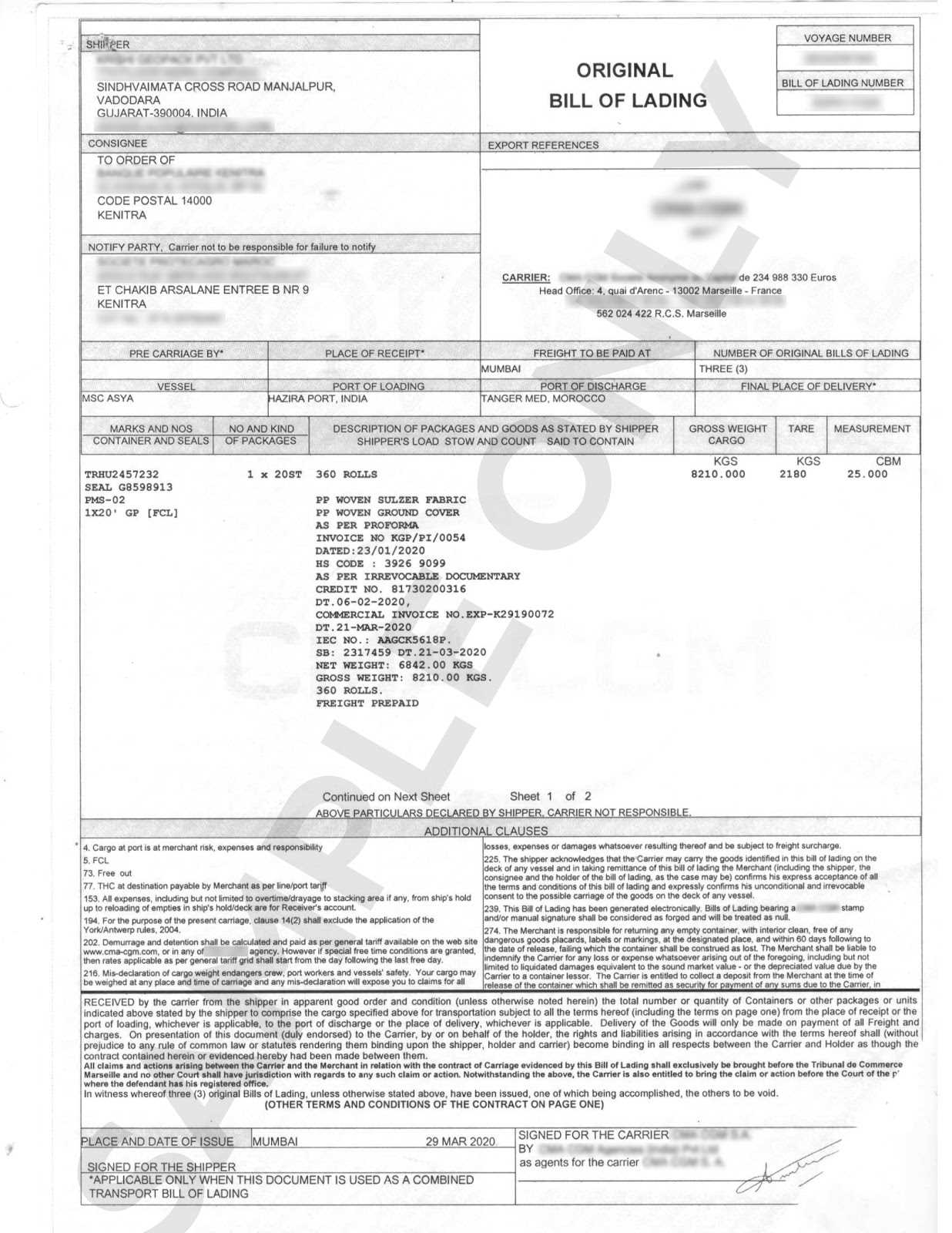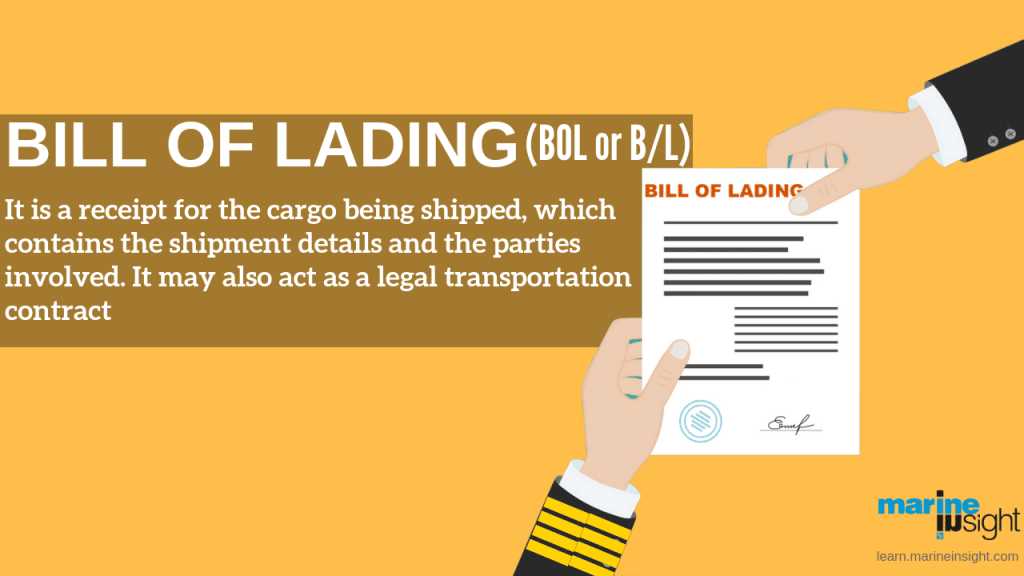What is a Bill of Lading?

A Bill of Lading is a legal document that serves as a contract between the shipper and the carrier. It is a crucial document in the shipping industry as it provides details about the goods being transported, the terms of the shipment, and the responsibilities of each party involved.
Key Information in a Bill of Lading
A Bill of Lading typically includes the following key information:
- Shipper and Consignee Details: The names and contact information of the shipper (the party shipping the goods) and the consignee (the party receiving the goods).
- Carrier Details: The name and contact information of the carrier (the company responsible for transporting the goods).
- Goods Description: A detailed description of the goods being shipped, including quantity, weight, dimensions, and any special handling instructions.
- Shipping Terms: The agreed-upon terms of the shipment, including the mode of transportation, the delivery date, and any additional services requested.
- Freight Charges: The cost of shipping the goods, including any additional charges or fees.
- Liability and Insurance: The responsibilities and liabilities of each party involved in the shipment, as well as any insurance coverage.
- Signatures: The signatures of the shipper, carrier, and consignee, indicating their agreement to the terms of the Bill of Lading.
The Bill of Lading serves as a receipt for the goods, a title of ownership, and a document of contract. It is used by the carrier to confirm the receipt of the goods and by the shipper to prove that the goods have been shipped.
Overall, a Bill of Lading plays a crucial role in the shipping industry by ensuring that goods are properly documented, transported, and delivered to the intended recipient.
Importance of Bill of Lading

The bill of lading is a crucial document in the shipping and logistics industry. It serves as a contract between the shipper and the carrier, providing detailed information about the goods being transported, the terms of the shipment, and the responsibilities of each party involved.
Here are some key reasons why the bill of lading is important:
- Legal Protection: The bill of lading provides legal protection to both the shipper and the carrier. It outlines the terms and conditions of the shipment, including liability limits, insurance coverage, and any special instructions or requirements. By signing the bill of lading, both parties agree to abide by these terms, ensuring that they are legally bound to fulfill their obligations.
- Transfer of Ownership: In international trade, the bill of lading serves as a document of title, which means it can be used to transfer ownership of the goods. The consignee (the party receiving the goods) must present the original bill of lading to claim the goods from the carrier. This helps prevent unauthorized individuals from taking possession of the goods and ensures that the rightful owner receives them.
- Documentation and Record-Keeping: The bill of lading serves as a valuable record of the shipment. It provides a detailed account of the goods, their condition, and any special handling instructions. This information is useful for inventory management, quality control, and auditing purposes. Additionally, the bill of lading can be used as supporting documentation for financial transactions, insurance claims, and legal disputes.
How to Prepare a Bill of Lading
Preparing a bill of lading is an essential part of the shipping process. It serves as a legal document that provides detailed information about the goods being transported, the parties involved, and the terms of the shipment. Here are the steps to prepare a bill of lading:
1. Identify the parties:
Start by identifying the shipper, the carrier, and the consignee. The shipper is the party that is sending the goods, the carrier is the company responsible for transporting the goods, and the consignee is the party that will receive the goods.
2. Describe the goods:
3. Include the terms and conditions:
Specify the terms and conditions of the shipment, including the mode of transportation, the delivery date, and any insurance coverage. This will ensure that both parties are aware of their rights and responsibilities.
4. Sign and date the bill of lading:
Once all the information has been entered, both the shipper and the carrier should sign and date the bill of lading. This signifies that they agree to the terms and conditions stated in the document.
5. Distribute copies:
Make copies of the bill of lading and distribute them to the relevant parties. The shipper, carrier, and consignee should each have a copy for their records.
Common Mistakes to Avoid with Bill of Lading
2. Incorrect packaging and labeling: Another common mistake is improper packaging and labeling of the cargo. It is essential to ensure that the goods are packed securely to prevent damage during transit. Additionally, proper labeling should be done to indicate any special handling instructions, hazardous materials, or fragile items. Failure to comply with packaging and labeling requirements can result in damaged goods or non-compliance with regulations.
3. Failure to inspect and document cargo condition: Before accepting the cargo, it is crucial to thoroughly inspect and document its condition. This includes checking for any damages, shortages, or discrepancies. Failing to conduct a proper inspection and document the cargo condition can make it difficult to prove liability in case of any disputes or claims for loss or damage.
4. Not retaining copies of the bill of lading: It is important to keep copies of the bill of lading for record-keeping purposes. These copies can serve as proof of shipment, delivery, and the terms and conditions agreed upon. Failing to retain copies of the bill of lading can make it challenging to resolve any disputes or claims that may arise in the future.
By avoiding these common mistakes, you can ensure that your bill of lading is accurate, compliant, and protects your interests throughout the shipping process.

Emily Bibb simplifies finance through bestselling books and articles, bridging complex concepts for everyday understanding. Engaging audiences via social media, she shares insights for financial success. Active in seminars and philanthropy, Bibb aims to create a more financially informed society, driven by her passion for empowering others.
